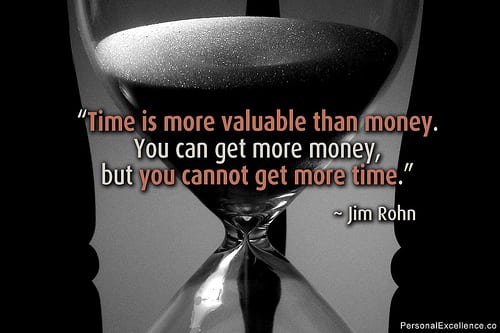Trade alerts provide the active trader or investor an alert when a specific event occurs. Trading alerts are a basic component of most brokerage firms and trading applications. This event could be based on a number of factors ranging from a specific price target, technical indicator or news event. At its core, trading alerts provide the means for a trader to be notified when a specific event occurs so the trader can take some sort of action. This action could be in the form of placing a trade or watching the trading activity of a stock more intently.
Like everything else in trading, trade alerts can be as simple or complicated as you would like. Depending on your trading edge, you will need to determine the type of alert that best complements your trading style.
Methods of receiving trade alerts
On-Chart Indicators
There are on-chart alerts which will trigger some sort of sound or pop-up alerting the trader a specific event has occurred. An event could be breach of a trend line or indicator. On-chart indicators are great for traders who like to make their alerts based on price action and not based on static numbers. For example, if I draw a rising trend line, the alert will be triggered at a different value at 10:00am vs 2:00pm simply based on the slope of the line. This again provides more flexibility of my alert as it is based on two dimensions, price and time.
Text Message Alerts, Email Alerts and Twitter Alerts

Text Message Stock Alerts
That’s right; you can receive trade alerts via text messages or email alerts. You may be asking yourself “why would I want to receive a text message or email of a trading alert?” For all of you that trade full-time and are able to closely monitor your positions, this will probably be overkill since you are sitting directly in-front of your computer screen. However, for those traders that have day jobs or like to get out of the house, this is a perfect means for staying plugged into the market without having to watch the market like a hawk.
The most popular form for alerts in today’s world is Twitter, which I will cover in more detail later in the article.
You will need to determine if being on the go works well for your trading style and how it ultimately impacts your bottom-line profitability.
Difference between day trade alerts and swing trade alerts

Swing Trade Alerts vs Day Trade Alerts
While the types of alerts could be the same in nature, the time aspect is the major differential between the two. For example, if you receive a swing trading alert, this could mean you are now in the monitor phase which could be for a few hours or days before you take any action.
Day trading does not allow for this long of a monitoring window as you are actively trading the stock of the day and what’s hot at 10:00 am, will probably not be two days later.
The other major difference is the sensitivity of price action. When you are day trading, if you receive an alert for a stock at $8.12, your entry price will need to be very close to this alert value to maximize the profitability of the trade. Conversely, if you are swing trading, your potential profit target is likely much greater than if you were day trading, therefore you are likely to have more flexibility of where you can enter your position.
How to use trading alerts
Reducing the noise of the market
One of the biggest advantages for using trading alerts is it reduces the amount of market noise you ingest. If you are new to the market and try to take in all that it provides, you will literally have sensory overload. Between the blogs, news sites, CNBC, market scanners, and StockTwits, you may have the urge to just bury your head in the sand from all the opinions flying around. A really easy way to slow down the market is to develop your alert triggers and to only monitor those stocks once an alert occurs. This keeps you focused on your edge, versus monitoring any and everything currently going on in the market.
I am personally at a point now, where I set my stock trade alerts the night before and will only look at the stock during the day if my alert is triggered.
Knowing when you are wrong
Identifying when you are wrong is one method for how to use trading alerts that most people overlook. Trading alerts are mostly thought of when opening a position.
I firmly believe that knowing when you are wrong is an essential component of becoming a successful trader. If you don’t know when you are wrong, then you are susceptible to blowing up your account with one bone head decision.
An easy way to do stay on top of this is to create an alert for a key level, that if violated should give you reason to pause.
You may be asking yourself, “Well, what’s the difference between setting an alert versus just entering a stop.” For me, I use the alert to notify me when the stock is approaching my stop level. I then take a look at the stock to see if the stop is still valid, or if the operators of the stock are in the process of pulling off the standard shakeout. If I feel a shakeout is in play, I will give my stop a little more room in order to avoid the trap.
How not to use trading alerts
There have been times when I’m swing trading and I will log into my account and see 20+ active alerts. Do you think that is helpful? Of course not….
Alerts should help in reducing the noise of the market, not adding to it. If your screen is constantly flashing and all you hear are bells whistling all day, then you need to take a step back and think through why you are trading. You could be an action junkie and not really concerned with making money. This is something you will need to ask yourself and only you will know the answer.
Where not to find trade alerts

Twitter Trade Alerts
With the advent of twitter, trading alerts are literally everywhere on the Internet. You have everyone from the hot shot guru, to the guy next door sharing their trading decisions.
There are two places in general that have a large pool of traders you can follow: (1) StockTwits and (2) Seeking Alpha. StockTwits is an aggregator of tweets, while Seeking Alpha uses an in-house custom tool which mimics Twitter.
I titled this section in a negative because the level of noise you encounter will reach epic proportions as you browse these sites. While the information can be useful at times, far too often the number of opinions will only cloud your judgment.
So, if you choose to listen to other people’s opinions on the market, you are better off going with one expert, versus dozens.
Trading Alert Services, Can you make money using them?
When you look across the web there are a number of trade alert services that claim to be able to provide substantial returns for the willing subscriber. These services fall into the below 5 primary buckets:
- Stock trading alerts
- Option trading alerts
- Penny stock alerts
- Forex trading alerts
- Insider trading alerts
While each category of alerts may monitor a different market or type of security, at the end of the day, the alert service claims to be able to make you money. The problems I have with these services are pretty extensive. My issue is not only with the service provider, but you the consumer as well.
Order Fills
First, since there will always be a lag in the alert and you being able to take action, you will never get the same fills as the gurus. This may not be as big of an issue if your preferred guru is swing trading or taking a longer-term view; however, if you are trading options or day trading, every tick matters.
So, when you are reviewing the trade performance of the guru, when you factor in slippage for when you would actually enter the trade, these stellar results will likely come down to earth.
What is the content of the trade alert?
When you sign-up for a service make sure you are clear on what you are receiving. Is it just the alert that the guru put on a trade? Or does the alert contain specifics such as the entry price, stop loss and profit target.
It may also seem like a silly question, but does the guru send out the alert prior to opening their own position? If the alert comes out after the fact, you are likely to fall into the same situation of getting a poor fill because all the other faithful subscribers are loading up at the same time.
Do you really believe?

Faith
Next, do you really believe in why the guru is placing the trade? Notice I did not ask you if you understood, but rather do you believe. The longer you trade the more you will realize that trading has very little to do with which indicator you use or market you trade. Trading primarily comes down to if you have a winning attitude and ultimately if you want to make money trading. If you don’t understand this concept or disagree, you likely haven’t finished your journey to becoming a consistently profitable trader.
So, before I go too far off on a tangent, will you have the unyielding belief of the trading system to hold onto the position when it goes against you? Will you be able to trust this guru if they go on a 4 or 5 trade losing streak?
Odds are you will not be able to sit through any drawdown period, because you have signed up with this guru to make easy, quick money immediately. This sort of thinking within itself is dangerous and opens you up to a number of negative possibilities. Like a ball bouncing around, you will likely bail on the guru right before they go on a run, or worst, be susceptible to scam artists, because you are looking for the quick fix.
You have to take every Trade
For those of you that read my article on trading psychology, you will remember that the key to trading is taking each and every trade. This means if your trading edge presents itself in the market, you are not to over analyze the trade or second guess yourself. You simply take the trade. Remember, trading is the law of averages and percentages. Once you begin to believe you can pick and choose which opportunity will be the big winner, you are out of the game.
So, how does all of this relate to a trade alert service? Depending on the service you will receive alerts for trades. With the vast majority of these services, the minute the alert is sent you need to open a position in the stock.
At the end of the day, the guru will report out his or her gains based on all of their trade signals. However, your results will not mirror their numbers exactly if you pick and choose which plays are the best.
You will likely see a drop of 50% or more in terms of gains if you try to outsmart the alert service.
Trade Alert Reviews
There are too many trading alert sites to count, so a full exhaustive review is not in the cards for this article. However, you can use the below list when evaluating a guru:
- Have they been in business for years?
- How are the reviews for the alert service?
- Is the guru published on reputable trading and financial sites around the web?
- Does the guru provide a daily trade alert or are the alerts in real-time?
- Is the guru a known commodity within the trading community?
- Is there an educational component to the alert service so you can actually begin to understand why the trades are being placed?
- Do you trade large enough that your potential returns more than cover the cost of the alert service?
- Are you able to paper trade the alert service for a minimum of 3-6 months to determine if you are able to mimic the trading alerts and turn a profit?
In summary
Trading alerts can come in many forms. There are those you create for yourself, those provided by experts and the tons of alerts on message boards and social media.
You have to think through what makes the most sense for you. At the end of the day you are trading to make money. If you are able to make money on these services for the short run great; however, at some point you will need to own your trading destiny.
If you would like to see how we can help you become a better trader, please visit: http://www.tradingsim.com
Photos
Twitter Photo – by Anthony Quintano
Text Message Photo – by Annie Mole
Time Photo – by Celestine Chua
Faith Photo – by Nanette Saylor











 Day Trading Basics
Day Trading Basics 
